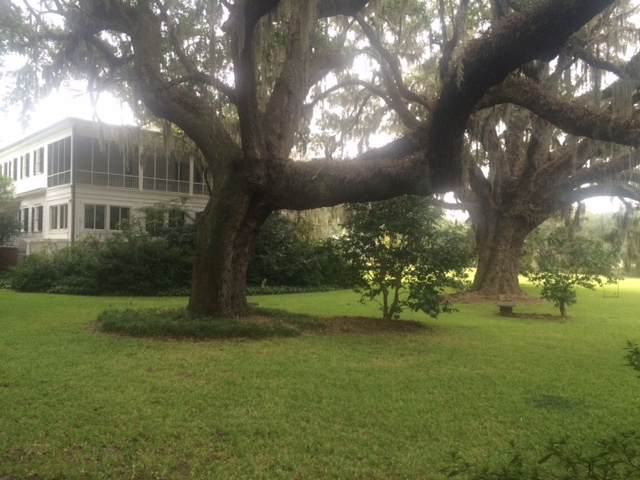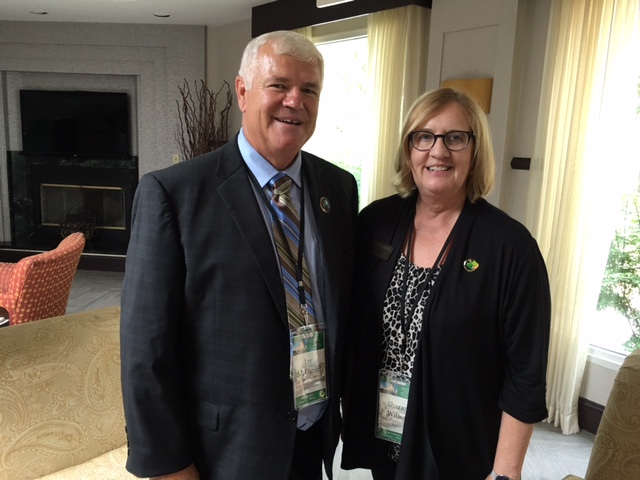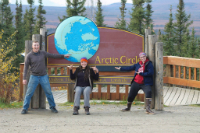
By Michelle Lovejoy, Executive Director of the North Carolina Foundation for Soil and Water Conservation
Did you know the North Carolina Association of Conservation Districts created a standalone 501(c)3 in 1999? The North Carolina Foundation for Soil and Water Conservation is separate from our state association and our sister RC&D councils and provides a space for our larger conservation family to weigh in on conservation issues. This family includes utility companies, agriculture and forestry advocacy groups, leaders in the agriculture industry, and banking institutions. Through the years, this unique nonprofit has brought $12 million in additional resources to the partnership, allowing us to accomplish much more than we could individually… (Learn more about how North Carolina has leveraged private funds and garnered support from nontraditional partners on NACD’s blog.)
…It's possible to leverage private resources and fundraise within an existing state association. We considered it, and perhaps that is what's best for your conservation family. In North Carolina, we decided on the foundation model to invite influential people and nontraditional partner organizations to join the conservation partnership. I hear some putting the brakes on this thought train: 'But what if we lose control of the nonprofit? What if the organization jumps the tracks and heads down a path that is not advantageous to our conservation programs?' Everything we accomplish in conservation is enabled by a foundation of trust and strong relationships. Even though new thoughts and ideas may feel uncomfortable at first, in the end it makes all of our programs stronger to broaden the base… (Read this month’s Did You Know? in full, here on NACD’s blog.)
Did you know that any individual, state, agency, or district can write a “Did You Know” article? The last Tuesday of each month, “Did You Know” is featured on NACD’s blog and in eResource. If you have comments or questions on this month’s, or suggestions for future editions, contact NACD Southeast Representative Phylis Vandevere.
Recap: House hearing on Chesapeake Bay
Last Thursday, the House Agriculture Committees’ Conservation and Forestry Subcommittee held a hearing on the Chesapeake Bay and the voluntary conservation efforts that have made a remarkable difference in the health of the watershed. NRCS Chief Jason Weller testified that agriculture-led conservation in the bay between 2006 and 2011 led to a 15.1 million ton decrease in edge-of-field sediment loss, a 26 percent decrease in nitrogen loss, and a 45 percent decrease in phosphorus loss.
Pennsylvania Department of Agriculture Secretary Russell Redding also cited success stories in the six-state watershed made possible by the agriculture industry. There’s more that must be done to achieve further reductions, Secretary Redding said, and “There’s not a way forward without conservation districts… They’ve been great partners, and we’ll continue to work with them.”
NACD Director of Government Affairs Coleman Garrison attended the hearing and provided comments to press. Read the Agri-Pulse story that features Coleman here.
NACD attends NASF annual meeting
Members of the forestry community and NACD Forestry Specialist Mike Beacom gathered in Savannah, Georgia, last week for the National Association of State Foresters’ annual meeting.
 Topic themes during the general session included, “Building a Shared Vision for Urban and Community Forests,” and “Sustaining Working Rural Forests.” A common topic of discussion during the three-day meeting was the need for Congress to pass a wildfire funding fix. Topic themes during the general session included, “Building a Shared Vision for Urban and Community Forests,” and “Sustaining Working Rural Forests.” A common topic of discussion during the three-day meeting was the need for Congress to pass a wildfire funding fix.
During the field tour, the group was able to observe active forest management at Lebanon Plantation (pictured), and received a guided tour through the Port of Savannah, which handles a significant portion of the domestic forest products trade. To learn more about your state forester and your state's Forest Action Plan, visit http://www.stateforesters.org.
NACD President Lee McDaniel addresses IECA members in Maryland
 Last Wednesday, NACD President Lee McDaniel (pictured at left with IECA Executive Director Sharan Wilson) joined members of the Mid Atlantic Chapter of the International Erosion Control Association in Annapolis to lay the ground work for future partnerships. Last Wednesday, NACD President Lee McDaniel (pictured at left with IECA Executive Director Sharan Wilson) joined members of the Mid Atlantic Chapter of the International Erosion Control Association in Annapolis to lay the ground work for future partnerships.
“IECA is similar to NACD in many ways,” Lee said in his address. “We’re both non-profit, diverse member organizations that provide education and resources for conservation leaders.”
“Our districts are always looking to partner with organizations and individuals who are dedicated to the same conservation values that NACD and IECA champion,” he continued. For more information about IECA and their 2,500 international members, visit the website.
Envirothon alums who bonded years ago reconnect
 Four years after the 2012 Envirothon, members of the Kodiak, Alaska, and Newfoundland teams have met again in Fairbanks. Four years after the 2012 Envirothon, members of the Kodiak, Alaska, and Newfoundland teams have met again in Fairbanks.
Michaela Pye, a member of the Newfoundland and Labrador team out of Canada, is doing an exchange year at University of Alaska Fairbanks, where Hannah is currently studying, and Lachlan just so happened to be stationed in Fairbanks with the military. “We thought it was a pretty neat thing. We all met at Envirothon in Montana (2012) and joked about visiting each other one day. I guess the time had come!” Pye said.
|
|
|
|
|
Email Marketing By
|


|
|
|
|
|